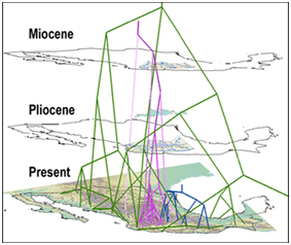
Lisa Marrack
Phylogenies of the freshwater fish family Goodienae: (purple; Webb et al., 2004) and genera Poeciliopsis (green; Mateos et al., 2002) and Notropis (blue; Schonhuth & Doadrio, 2003) with modern elevation and drainage. Pliocene and Miocene drainage and palaeolakes from de Cserna & Alvarez (1995). [In Kidd and Ritchie (2006): Journal of Biogeography].
 RSS Feed
RSS Feed
